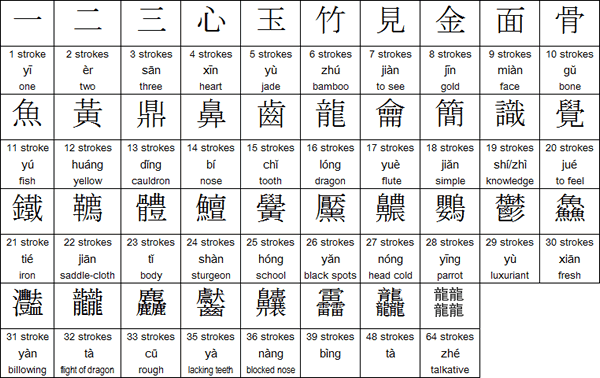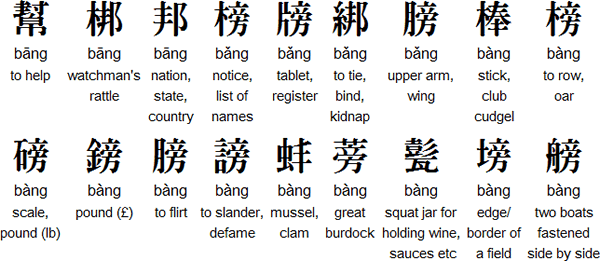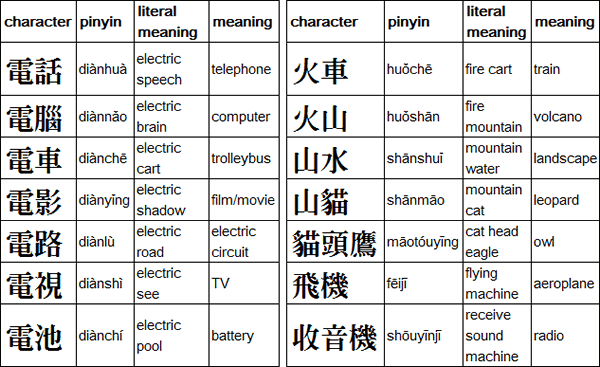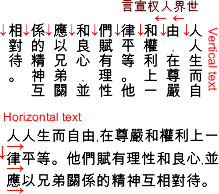Most linguists believe that writing was invented in China during the latter half of the 2nd millenium BC and that there is no evidence to suggest the transmission of writing from elsewhere. The earliest recognisable examples of written Chinese date from 1500-950 BC (Shang dynasty) and were inscribed on ox scapulae and turtle shells - "oracle bones". In 1899 a
[style="color: rgb(0, 102, 0) ! important; font-family: verdana,helvetica,sans-serif; font-weight: 400; font-size: 13px; position: static;"]scholar 
from Beijing named Wang Yirong noticed symbols that looked like writing on some "dragon bones" which he had been prescribed by a pharmacy. At that time "dragon bones" were often used in Chinese medicine and were usually animal fossils. Many more "oracle bones" were found in the ruins of the Shang capital near Anyang in the north of Henan province.
The script on these "oracle bones" is known as 甲骨文 (jiăgŭwén) - literally "shell bone writing". They were used for divination, a process which involved heating them then inspecting the resulting cracks to determine to answers to one's questions. The bones were then inscribed with details of the questions and the answers. Most of the questions involved hunting, warfare, the weather and the selection of auspicious days for ceremonies.
Further information about the oracle bones:
http://www.chinapage.com/oracle/oracle00.html http://www.lib.cuhk.edu.hk/uclib/bones/bones.htm A collection of oracle bones in the
National Palace Museum near Taipei.
Recently archaeologists in China have unearthed many fragments of neolithic pottery, the oldest of which date from about 4800 BC, inscribed with symbols which could be a form of writing. None of these symbols resemble any of the Shang characters and the likelyhood of deciphering them is remote given the paucity of material.
[
contents ]
The Chinese writing system 
Chinese is written with characters which are known as 漢字 [汉字] (hànzi). The characters were originally pictures of people, animals or other things, but over the centuries they have become increasingly stylised and no longer resemble the things they represent. Many characters have been combined with others to create new ones.
Until the early 20th century, Classical Chinese, 文言 (wényán), was the main form of writing in China. It was standardised during the late Han Dynasty (25-220 AD) and was also used in Korea, Japan and Vietnam before they developed their own
[style="color: rgb(0, 102, 0) ! important; font-family: verdana,helvetica,sans-serif; font-weight: 400; font-size: 13px; position: static;"]writing systems.
In Classical Chinese most words were monosyllabic and written with a single character. However, during the 1920s a new form of written Chinese modelled on spoken
[style="color: rgb(0, 102, 0) ! important; font-family: verdana,helvetica,sans-serif; font-weight: 400; font-size: 13px; position: static;"]Mandarin was developed. Most Chinese publications since then have been written in this form, which is known as 白話 [白话 ] (báihuà), though Classical Chinese constructions and especially proverbs are still used to some extent.
In spoken Chinese, words are made up of one, two or more syllables. Each of the syllables is written with a separate character. Each character has its own meaning, though many are used only in combination with other characters.
Every character is given exactly the same amount of space, no matter how complex it is. There are no spaces between characters and the characters which make up multi-syllable words are not grouped together, so when
[style="color: rgb(0, 102, 0) ! important; font-family: verdana,helvetica,sans-serif; font-weight: 400; font-size: 13px; position: static;"]reading Chinese, you not only have to work out what the characters mean and how to pronounce them, but also which characters belong together.
How many characters?
The Chinese writing system is an open-ended one, meaning that there is no upper limit to the number of characters. The largest Chinese dictionaries include about 56,000 characters, but most of them are archaic, obscure or rare variant forms. Knowledge of about 3,000 characters enables you to read about 99% of the characters used in Chinese newspapers and magazines. To read Chinese literature,
[style="color: rgb(0, 102, 0) ! important; font-family: verdana,helvetica,sans-serif; font-weight: 400; font-size: 13px; position: static;"]technical writings or Classical Chinese though, you need to be familiar with at least 6,000 characters.
Usage
Characters can be used on their own, in combination with other characters or as part of other characters.
Click here to see how this works for the character for horse: 馬
Strokes
Chinese characters are written with the following twelve basic strokes:

A character may consist of between 1 and 64 stokes. The strokes are always written in the same direction and there is a set order to write the strokes of each character. In dictionaries, characters are ordered partly by the number of stokes they contain.

Notes
The 39-stroke character (3 x thunder) means "the sound of thunder" and is always written doubled (靐靐). The 48-stroke character (3 dragons) means "the appearance of a dragon walking".
Homophones
There are approximately 1,700 possible syllables in Mandarin, which compares with over 8,000 in English. As a result, there are many homophones - syllables which sound the same but mean different things. These are distinguished in written Chinese by using different characters for each one.
Not all the following characters are pronounced with the same tone, so to Chinese ears they sound different. To Western ears however they all sound the same. These syllables can be distinguished in speech from the context and because most of them usually appear in combination with other syllables.

If you look closely, you will notice that some of the characters above have parts in common. These parts give you a clue to how to pronounce the characters.
More examples of homophones It is even possible to write a text in Chinese using on one sound, pronunced with different tones, of
[style="color: rgb(0, 102, 0) ! important; font-family: verdana,helvetica,sans-serif; font-weight: 400; font-size: 13px; position: static;"]course. This is exactly what Chinese linguist, Zhao Yuanren, did when he wrote the "Story of Shi Eating the Lions" using nothing but the sound 'shi'. The story makes sense in written form, but is impossible to understand when read aloud.
You can see and hear the story on:
http://www.yellowbridge.com/onlinelit/stonelion.html Compound words
Chinese verbs and adjectives generally consist of one character (syllable) but nouns often consist of two, three or more characters (syllables):
 More examples
More examples Simplified characters
In an effort to increase literacy, about 2,000 of the characters used in China have been simplified. These simplified characters are also used in Singapore, but in Taiwan, Hong Kong, Macau and Malaysia the traditional characters are still used. Here are some examples (simplified characters in red):
 More examples
More examples Direction of writing

Traditionally Chinese was written from right to left in vertical columns. The first publication in Chinese using horizontal (left to right) text was Robert Morrison's
Dictionary of the Chinese language, published in 1815–1823 in Macau. The increasing use of words in Western
[style="color: rgb(0, 102, 0) ! important; font-family: verdana,helvetica,sans-serif; font-weight: 400; font-size: 13px; position: static;"]languages, especially English, in Chinese texts from the early 20th century made horizontal texts more popular.
Since 1949 horizontal writing has become the standard in the PRC, and all PRC newspapers changed from vertical to horizontal text in 1956, though some headlines are written vertically, as are inscriptions of signs on most state organisations.
The horizontal writing of Chinese is normal in Singapore, and it has been gradually adopted in Hong Kong, Macao and in overseas Chinese communities since the 1990s.
Vertical text remains popular in Taiwan however, though horizontal text is used as well. In Taiwan newspapers and magazines with vertical text, some of the headlines and titles are written horizontally right to left across the top of the main text.
Use of Chinese characters for other languages
Chinese characters are used to write Modern Standard Chinese, which is based largely on spoken Mandarin. Other varities of Chinese, especially Cantonese, are sometimes written with Chinese characters, or with a combination of characters and words in the Latin alphabet. Some of the characters used are archaic or invented specifically for these languages.
Chinese characters have been used to write
Japanese and
Korean and
Vietnamese. They are still used in written Japanese, in combination with
hiragana and
katakana, and to a much lesser in written Korean, while Vietnamese is now written with the Latin alphabet.
[
contents ]
Sample text in Chinese

Hànyŭ pīnyīn transliteration
Rénrén shēng ér zìyóu, zài zūnyán hé quánlì shàng yīlǜ píngdĕng. Tāmen fùyŏu lĭxìng hé liángxīn, bìng yīng yĭ xiōngdì guānxì de jīngshén hùxiāng duìdài.

Listen to a recording of this text [link=http://www.omniglot.com/writing/mandarin_pts.htm#samp]Other transliterations of this text Translation
All human beings are born free and equal in dignity and rights. They are endowed with reason and conscience and should act towards one another in a spirit of brotherhood.
(Article 1 of the Universal Declaration of Human Rights) Longer text sample (Tower of Babel)
 Recommended books
Recommended books
Books about Chinese characters and calligraphy Language learning materials for:
Classical Chinese, Mandarin, Shanghainese, Hokkien, Taiwanese and
Cantonese Learn Mandarin Chinese abroad Other semanto-phonetic writing systems
Ancient Egyptian, Chinese,
Chữ-nôm,
Japanese,
Jurchen,
Khitan,
Linear B,
Mayan,
Naxi,
Tangut (Hsihsia)